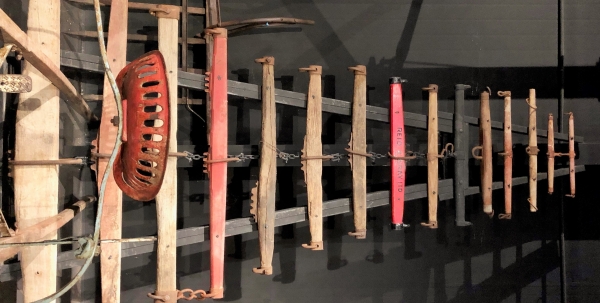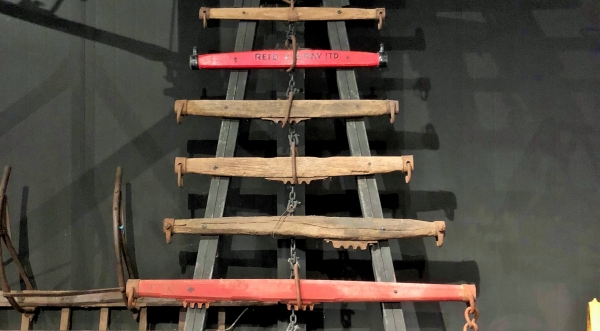A collection of swingletrees, a humble, yet essential piece of horse-drawn equipment in the Coach House Museum, pays homage to farming practices in days gone by.

In New Zealand the swingletree was generally a solid piece of wood, suspended between the rear of the pulling horse and the vehicle or implement it was coupled up with.
In England they were called Whippletrees, and in the United States – Wiffletrees.
Swingletrees were designed to achieve two important jobs:
In some situations, a heavier swingletree (or load evener) is used to allow the even distribution of the pull to a greater number of horses.

Traditionally swingletrees are made of the strongest of timbers. In New Zealand Eucalyptus timber was very common as its strength was renowned, although its weight was often an issue. In more refined vehicles, oak was always most suitable.
Toward the end of the horse-drawn farm equipment era, folded metal was often used for the swingletrees of mowers and harvesters.
The swingletrees at the museum are displayed on a large frame and are a representative sample of the diversity of the humble, yet essential, piece of horse-drawn equipment.